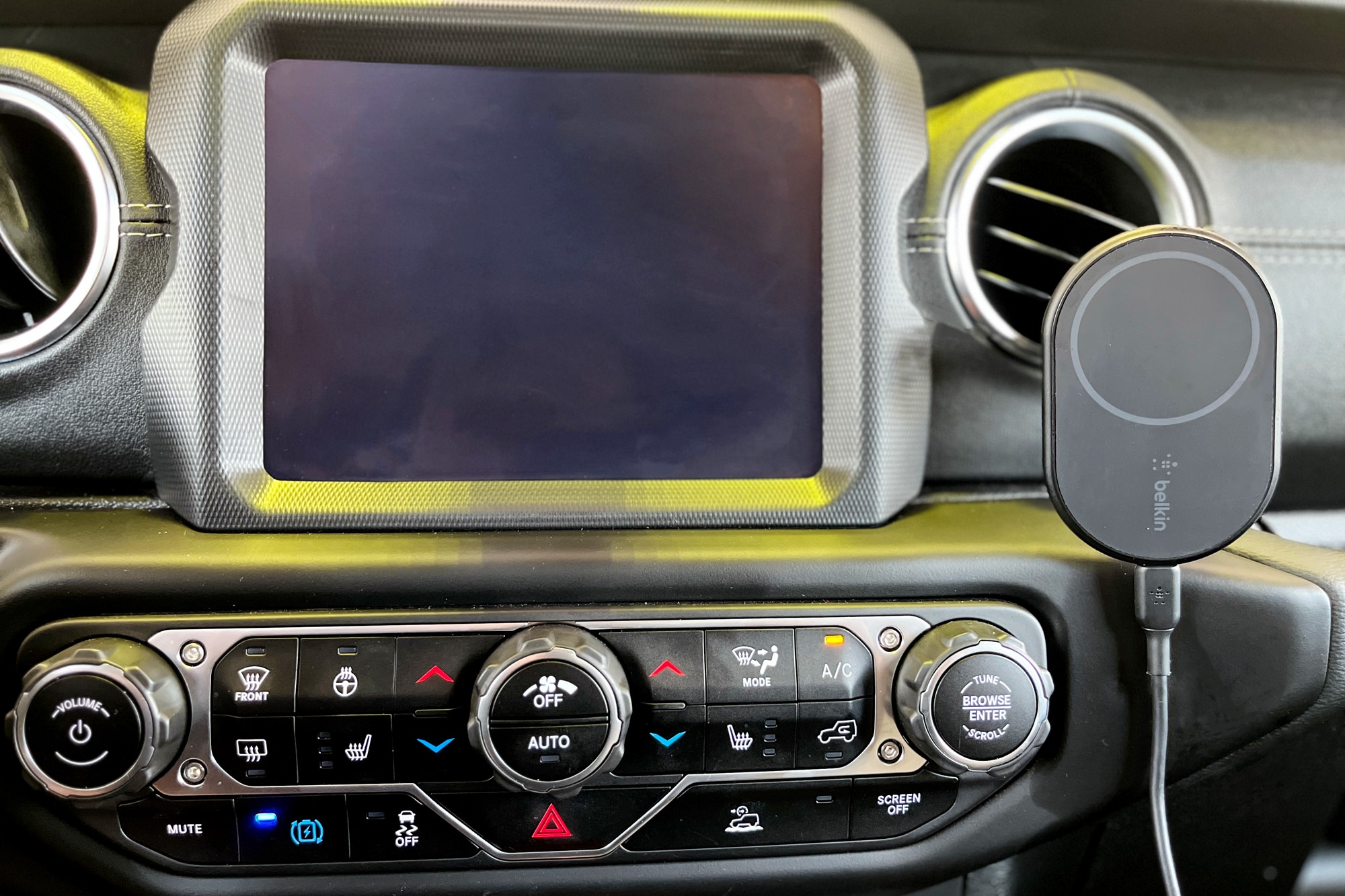4 Things to Know About Aftermarket In-Car Wireless Charging Pads
From power to installation, here's what you need to know about wireless charging pads.
 Belema Iyo | Capital One
Belema Iyo | Capital One
Many new car models come equipped with wireless phone chargers, which means your center console isn't cluttered with annoying cables. If your vehicle doesn't have a wireless charger built in, however, you can still charge your devices wirelessly while on the road with an aftermarket charging pad. Here's what you need to know about installing a wireless charger in your vehicle.
Wireless Charging Pad Mounting Options
Some wireless chargers are flat devices that sit on the center console or in the storage cubby in front of that console, if there's enough room. Most either mount to the dashboard or clip into the air vents. If you're going to use your phone for navigation, then a charger that mounts so your phone is viewable is a good idea. If you're going to be moving the charging pad from one car to another, look for one with a simple vent clip or a dashboard suction cup rather than an adhesive.
Check That Your Phone Fits Your Wireless Charger
Phones come in a wide range of sizes, and some of them are quite large. This can limit your wireless charging pad options. Carefully check the dimensions of your phone against the dimensions of your wireless charging pad. Your phone must lie completely flat against the charging pad or it won't connect and charge. If it's too large to fit between clips designed to hold it in place, you need a different charger. If you have an iPhone, look for a MagSafe wireless charging pad that magnetically holds your phone in place without the need for clips.
Charging Speed
Wireless chargers generally accommodate Qi wireless charging, which is the standard used by both iPhones and Android devices. The slowest wireless charging pads have a speed of just 5 watts, but most now have a speed of 10 watts or more, which is considered fast wireless charging. No matter how fast your wireless charging pad can charge, however, it's limited by what your phone can accept. This varies by model. An iPhone is limited to 7.5 watts while Android phones support up to 15 watts. It won't hurt your phone to have a wireless charger with a higher charging speed than the device can accept, and it could come in handy in the future should you want to change phones.
Powering Your Wireless Charger
While you won't need to plug in your phone, you will need to plug in your wireless charging pad. Depending on the model, it may include a charging cable with or without a cigarette lighter adapter. Check to see if you need to buy these accessories separately. The type of connection included has an impact on how fast your phone will charge. A Micro-USB cable is not capable of fast charging, while a USB-C cable or Apple Lightning cable does allow for fast charging.
Written by humans.
Edited by humans.
 Nicole Wakelin
Nicole WakelinI write about cars. A lot. That's because I’ve always loved cars and the fact that they regularly hand me the keys to shiny new automobiles so I can write about them is a constant source of amazement. I cover breaking news, write reviews, and attend auto shows and new vehicle launches across the country. The more winding the road and the more unknown the route, the better.
Related articles
View more related articles